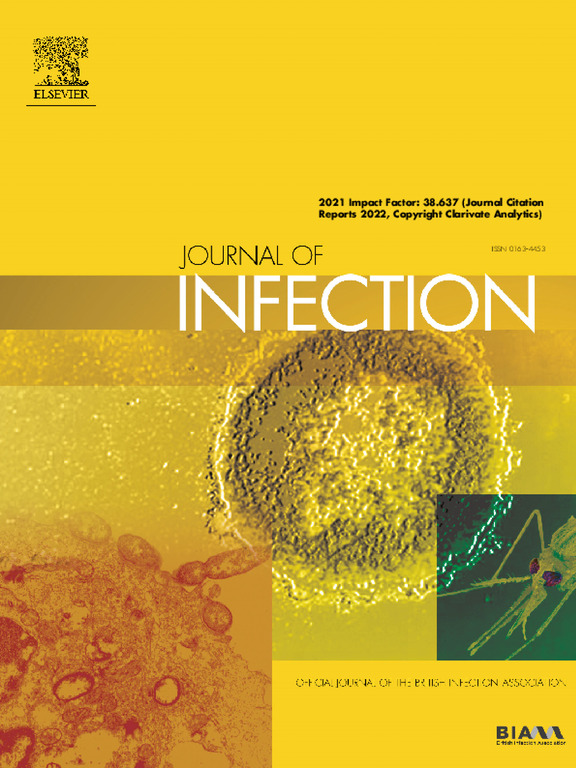Gram-negative intratumoral bacteria mediate lymph node metastasis through LPS-TLR4/MAPK signaling pathway in cervical cancer
IF 11.9
1区 医学
Q1 INFECTIOUS DISEASES
引用次数: 0
Abstract
Background
Intratumoral bacteria have been identified as prevalent in various solid tumors, playing a significant role in tumor progression. Lymph node metastasis is a major clinical feature and the primary cause of mortality in cervical cancer (CC). However, the effect of intratumoral bacteria on lymphatic node metastasis in CC remains unclear.
Method
This study employed 16S rDNA sequencing and targeted bacterial culture to investigate the distribution of intratumoral bacteria in human CC tissues. The identified Gram-negative bacteria, including Escherichia coli (E. coli), Prevotella bivia (P. bivia), and Fusobacterium nucleatum (F. nucleatum), were isolated, and their roles in metastasis were examined using in vitro transwell and capillary tube formation assays on human lymphatic endothelial cells (HLEC). The signaling pathways involved in metastasis were assessed by examining TLR4/MAPK activation and the expression of prometastatic factors EFNA1 and EDN2. In vivo studies using a mouse footpad tumorigenesis model were also conducted to observe the effect of LPS, which was extracted from these three gram-negative intratumoral bacteria and E. coli on lymph node metastasis.
Result
A higher abundance of Gram-negative bacteria, especially in metastatic CC tissues, was observed. E. coli, P. bivia, and F. nucleatum enhanced capillary tube formation in lymphatic endothelial cells and facilitated metastasis of uninfected tumor cells through paracrine signaling. These bacteria activated the TLR4/MAPK signaling pathway via lipopolysaccharide (LPS), leading to the upregulation of prometastatic factors EFNA1 and EDN2. Knockdown of EFNA1 and EDN2 attenuated the bacteria-induced metastasis, whereas overexpression of these factors mimicked the effects of bacterial infection. In vivo, LPS, which was extracted from E. coli, P. bivia, and F. nucleatum and live E. coli promoted lymph node metastasis, with elevated LPS levels and MAPK-EFNA1/EDN2 expression observed in infected mice compared to controls.
Conclusion
The study suggests that Gram-negative bacteria, particularly E. coli, P. bivia, and F. nucleatum, play a causal role in exacerbating lymph node metastasis in CC. These findings highlight the potential of targeting these bacteria and their associated signaling pathways as therapeutic strategies to improve clinical outcomes in CC patients.
革兰氏阴性瘤内细菌通过LPS-TLR4/MAPK信号通路介导宫颈癌淋巴结转移
背景:瘤内细菌在各种实体肿瘤中普遍存在,在肿瘤进展中起着重要作用。淋巴结转移是宫颈癌(CC)的主要临床特征和主要死亡原因。然而,肿瘤内细菌对CC淋巴结转移的影响尚不清楚。方法:采用16S rDNA测序和靶向细菌培养方法研究人CC组织瘤内细菌的分布。对分离得到的革兰氏阴性细菌,包括大肠杆菌(E. coli)、bivia普雷沃氏菌(P. bivia)和核梭杆菌(F. nucleatum)进行了分离,并利用体外淋巴内皮细胞(HLEC)的transwell和毛细管形成实验研究了它们在转移中的作用。通过检测TLR4/MAPK的激活以及前转移因子EFNA1和EDN2的表达来评估参与转移的信号通路。采用小鼠脚垫肿瘤发生模型进行体内实验,观察从这三种革兰氏阴性瘤内细菌和大肠杆菌中提取的LPS对淋巴结转移的影响。结果:革兰氏阴性菌的丰度较高,尤其是在转移性CC组织中。大肠杆菌、双胞假单胞杆菌和具核假单胞杆菌增强淋巴内皮细胞毛细血管的形成,并通过旁分泌信号促进未感染肿瘤细胞的转移。这些细菌通过脂多糖(LPS)激活TLR4/MAPK信号通路,导致前转移因子EFNA1和EDN2上调。EFNA1和EDN2的敲低可以减弱细菌诱导的转移,而这些因子的过表达可以模拟细菌感染的效果。在体内,从大肠杆菌、双胞杆菌、具核梭菌和活大肠杆菌中提取的LPS促进了淋巴结转移,与对照组相比,感染小鼠的LPS水平和MAPK-EFNA1/EDN2表达升高。结论:本研究提示革兰氏阴性菌,特别是大肠杆菌、双胞假单胞菌和具核假单胞菌,在CC患者的淋巴结转移中发挥了因果作用,这些发现强调了靶向这些细菌及其相关信号通路作为治疗策略改善CC患者临床预后的潜力。
本文章由计算机程序翻译,如有差异,请以英文原文为准。
求助全文
约1分钟内获得全文
求助全文
来源期刊

Journal of Infection
医学-传染病学
CiteScore
45.90
自引率
3.20%
发文量
475
审稿时长
16 days
期刊介绍:
The Journal of Infection publishes original papers on all aspects of infection - clinical, microbiological and epidemiological. The Journal seeks to bring together knowledge from all specialties involved in infection research and clinical practice, and present the best work in the ever-changing field of infection.
Each issue brings you Editorials that describe current or controversial topics of interest, high quality Reviews to keep you in touch with the latest developments in specific fields of interest, an Epidemiology section reporting studies in the hospital and the general community, and a lively correspondence section.
 求助内容:
求助内容: 应助结果提醒方式:
应助结果提醒方式:


